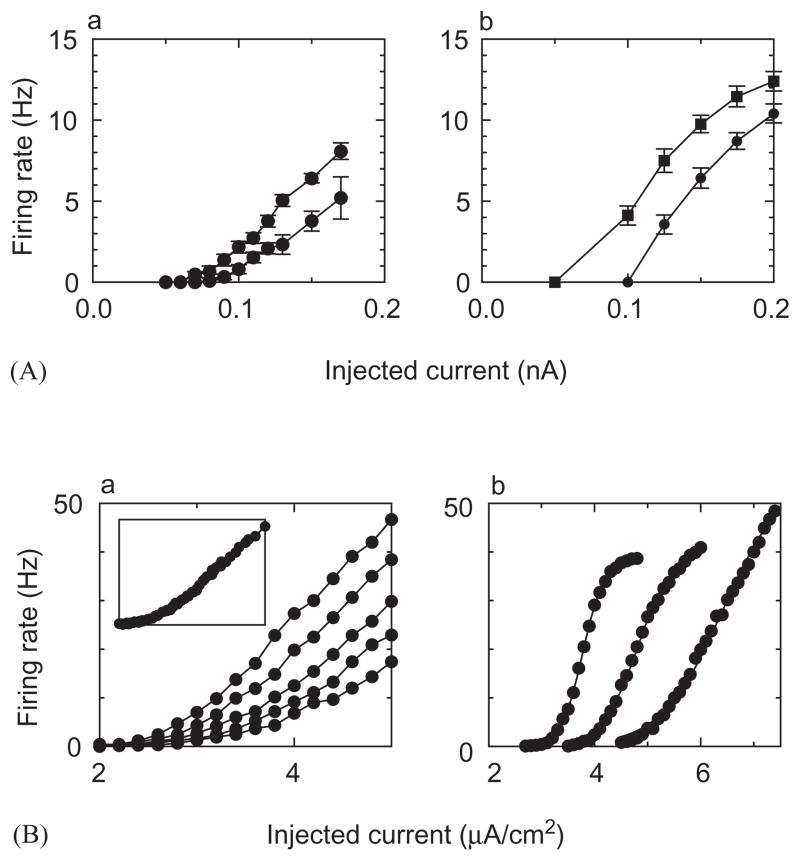Fig. 2.
Subtractive and divisive modulation of f–I curves with inhibitory synchrony. (A) f–I curves for two different neurons in slices of rat prefrontal cortex. The firing rate did not saturate in (a), whereas it did saturate in (b). In (a) and (b), for the top curve σIV = 1 ms and for the bottom curve σIV = 4 ms. (B) Model results. (a) Multiplicative gain modulation with inhibitory synchrony. aIV = 10, from top to bottom σIV = 1, 2, 3, 4, and 5 ms. Inset: all curves could be overlaid by a shift in the current and a rescaling of the firing rate axis. (b) Shift in neural sensitivity with inhibitory synchrony, aIV = 50, from left to right, σIV = 1, 3, and 5 ms. The solid lines are fits to a sigmoid function, filled circles are simulation results.

